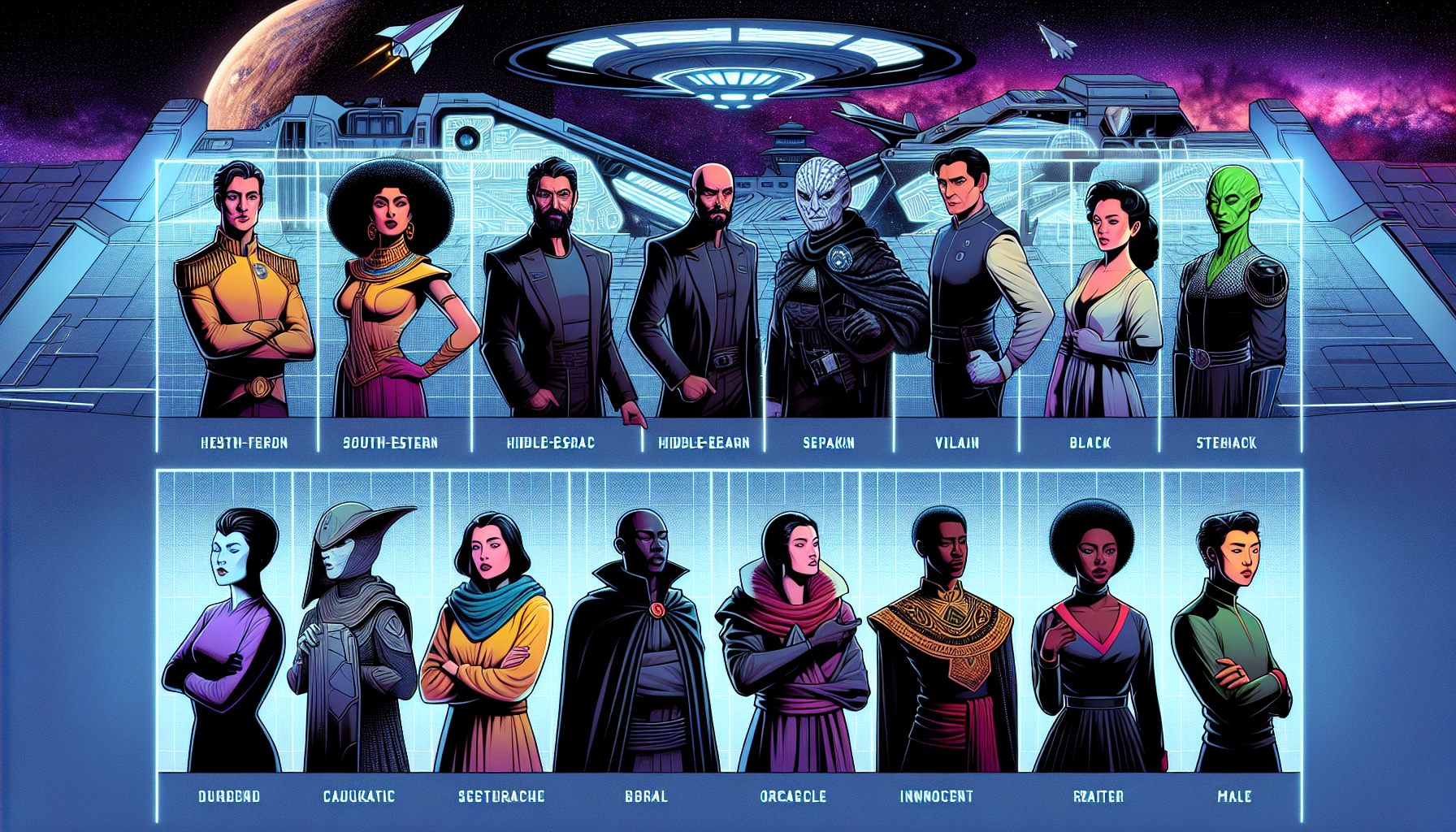
1. The Hero
The hero is the central figure in most science fiction narratives, embodying the qualities of bravery, curiosity, and integrity. The hero often starts off as an underdog who rises to the occasion to confront extraordinary challenges. This archetypal character frequently undergoes a significant transformation, reflecting the genre’s themes of evolution and self-discovery. Characters like Luke Skywalker from Star Wars and Ellen Ripley from Alien exemplify the hero archetype, each embarking on a journey that tests their limits and fortitude.
2. The Mentor
The mentor is a guiding force, providing wisdom, guidance, and training to the hero. This character often possesses knowledge of the universe that surpasses that of other characters and uses it to prepare the hero for the trials ahead. Mentors such as Obi-Wan Kenobi in Star Wars or Morpheus in The Matrix play crucial roles in the hero’s journey by instilling knowledge, confidence, and the necessary skills to face upcoming challenges.
3. The Scientist or Inventor
Science fiction leans heavily on characters that embody intellect and innovation. The scientist or inventor galvanizes the plot with their creations or discoveries, often propelling the narrative into new territories. Whether it’s Doc Brown in Back to the Future with his time-traveling DeLorean or the visionary engineers in Star Trek, these characters highlight the genre’s investment in exploring scientific possibilities and technological advancements.
4. The Companion
The companion is often a loyal friend or associate of the hero, providing support, humor, and perspective throughout the narrative. This character may not have the same heroic qualities, but their dedication and loyalty play an integral role in the protagonist’s development and success. Examples include Samwise Gamgee from The Lord of the Rings trilogy and Chewbacca from Star Wars.
5. The Anti-Hero
The anti-hero stands out for embodying a mix of flaws and redeeming qualities, creating a complex character that often questions moral codes. Their journey might mirror that of the traditional hero, but their methods or motivations reveal a more nuanced portrait of heroism. Characters such as Han Solo in Star Wars and Rick Deckard from Blade Runner provide layers to their narratives through their conflicted natures and morally ambiguous choices.
6. The Villain
The villain opposes the hero and represents the darker forces at play within the narrative. Often possessing a powerful intellect and charismatic nature, villains are as critical to the development of the story as the hero. They challenge the moral and physical landscapes of the other characters, testing the protagonist’s resolve and fortitude. Examples include Darth Vader from Star Wars and HAL 9000 from 2001: A Space Odyssey.
7. The Artificial Intelligence
Artificial Intelligence (AI) as a character explores themes of consciousness and the nature of humanity. Whether depicted as friend or foe, AI characters often challenge human characters’ understanding of life and ethics. From Data in Star Trek to the various incarnations of robots in Isaac Asimov’s works, AI characters question the boundaries between human and machine.
8. The Explorer
The explorer character is consumed by the desire to discover new worlds and civilizations, reflecting science fiction’s inherent quest for knowledge and adventure. These characters are pivotal in expanding the universe within the narrative, providing new settings and alien cultures to explore. Captain James T. Kirk from Star Trek and Star-Lord from Guardians of the Galaxy are prime examples of explorers who are continually pushing the boundaries of what is known.
9. The Outsider
The outsider is characterized by their marginal status —either through alien birth, ideological divergence, or societal exclusion— and provides a critical outside perspective on human conditions and societal norms. They often challenge the status quo and bring about significant transformation or enlightenment. Characters like Spock from Star Trek or the Doctor from Doctor Who leverage their unique perspectives to influence those around them profoundly.
10. The Survivor
The survivor is characterized by their resilience and tenacity, often emerging in post-apocalyptic settings where survival is an everyday concern. These characters illustrate the human spirit’s endurance under extreme conditions and often act as a beacon of hope or pragmatism. Mad Max from Mad Max series and Katniss Everdeen from The Hunger Games demonstrate the lengths to which humans will go to persevere and protect what matters most.
These archetypes form the backbone of many compelling science fiction stories, providing a framework for exploring our humanity through the lens of futuristic and alternate environments. By understanding these universal roles, readers and viewers can connect more deeply with the imaginative worlds that science fiction presents.






